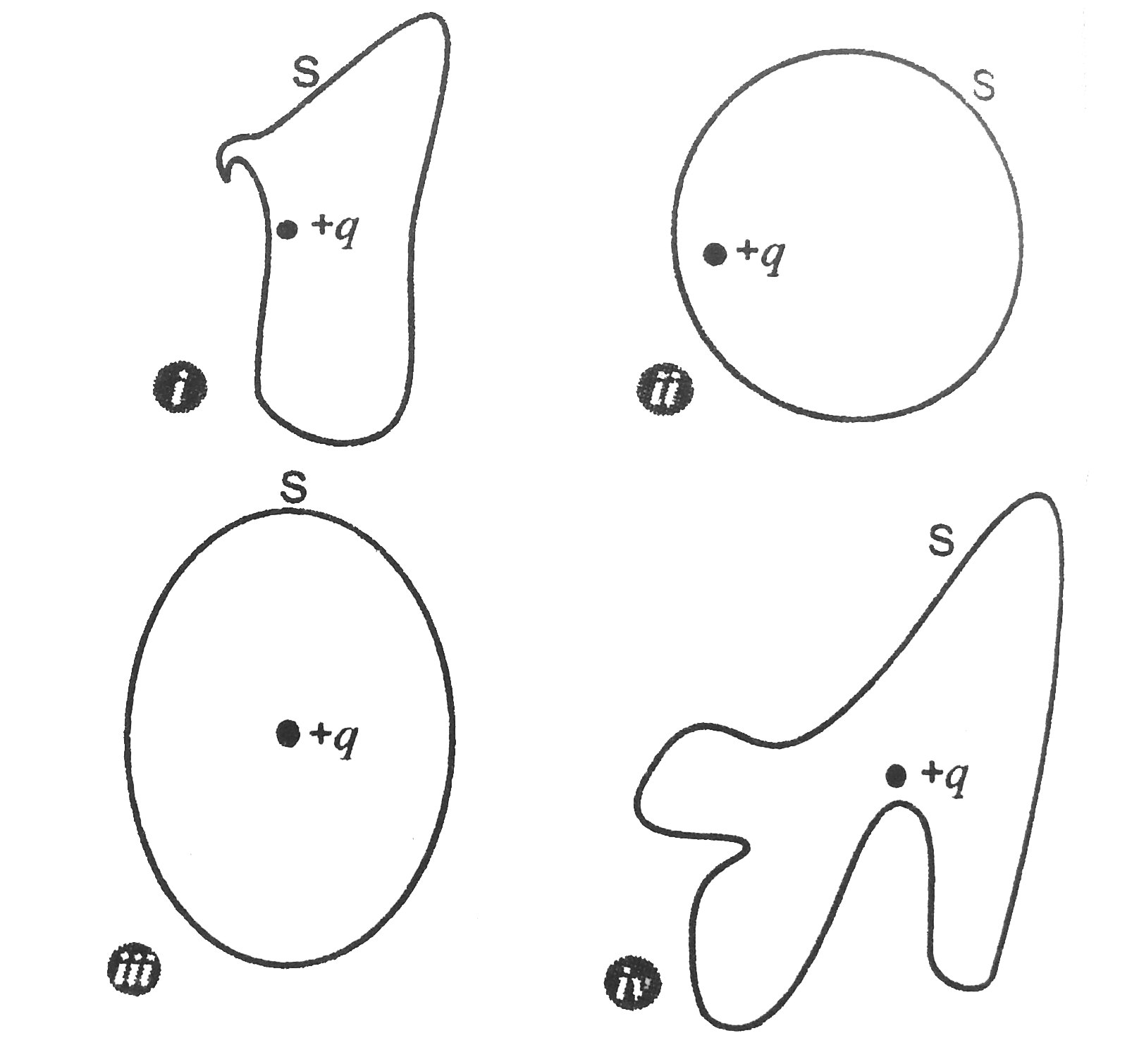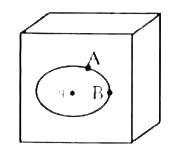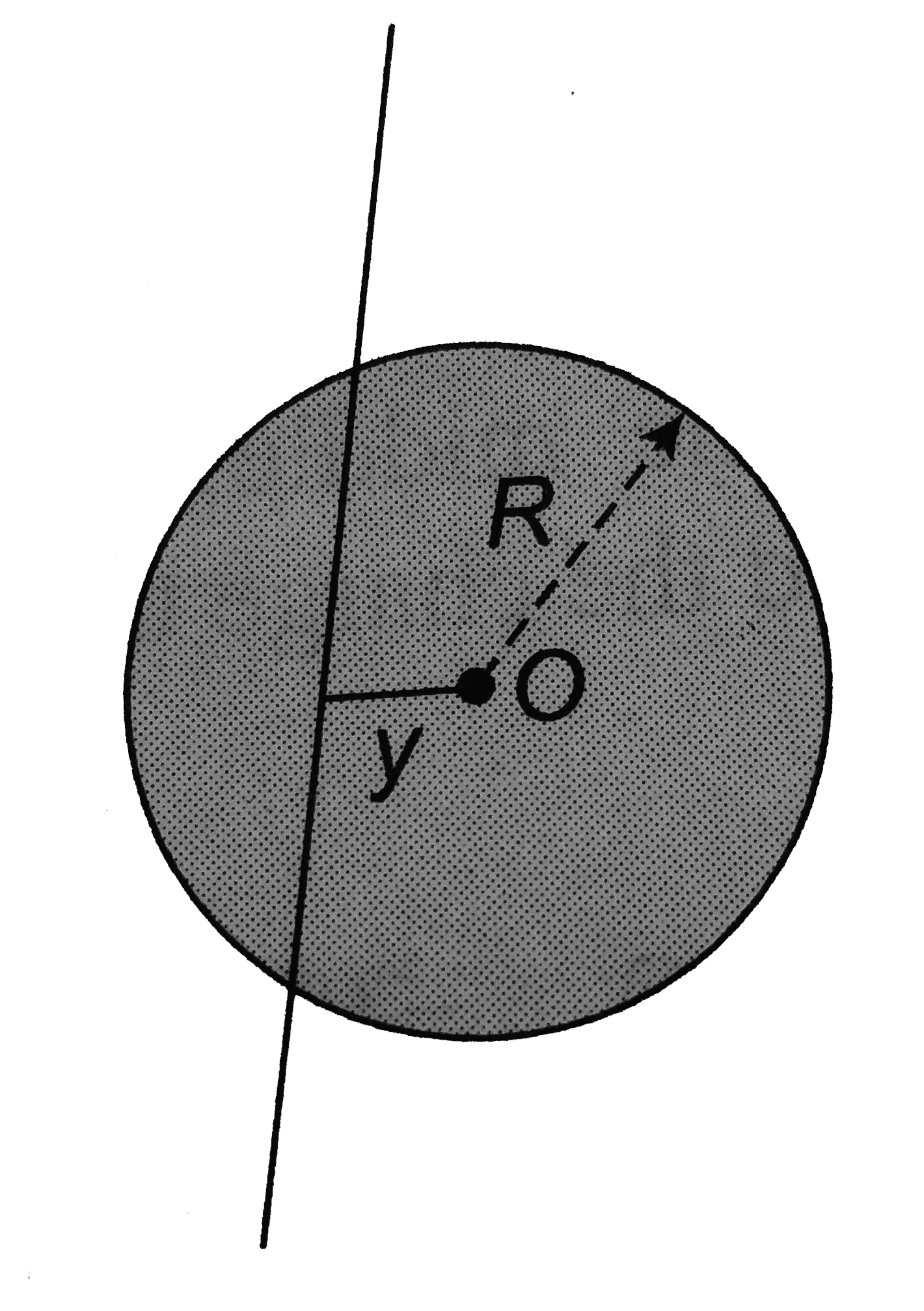The electric flux through the surface

in fig. (iv) is the largest
in fig. (iii) is the least
in fig. (ii) is same as fig.(iii) but is smaller than fig.(iv)
Is the same for all the figures.
The correct Answer is:D
Gauss' law of electrostatics state that the total of the electric flux out of a closed surface is equal to the charge enclosed decided by the permittivity i.e., Q electric =Qε0 Thus, electfi flux through a surface doesn't depend on the shape, size or area of a surafce but it depends on the number of charges enclosed by the surface
So, here in this question, al the figures same electric flux as all of them has single positive charge.
Topper's Solved these Questions
- ELECTRIC CHARGES AND FIELDBOOK - NCERT EXEMPLAR ENGLISHCHAPTER - ELECTRIC CHARGES AND FIELDEXERCISE - MCQ s (More than One Options)
6 Videos
- ELECTRIC CHARGES AND FIELDBOOK - NCERT EXEMPLAR ENGLISHCHAPTER - ELECTRIC CHARGES AND FIELDEXERCISE - Very short Type Question
6 Videos
- DUAL NATURE OF RADIATION AND MATTERBOOK - NCERT EXEMPLAR ENGLISHCHAPTER - DUAL NATURE OF RADIATION AND MATTEREXERCISE - LONG ANSWER TYPE QUESTION
5 Videos
- ELECTROMAGNETIC INDUCTION BOOK - NCERT EXEMPLAR ENGLISHCHAPTER - ELECTROMAGNETIC INDUCTION EXERCISE - Long
11 Videos
Similar Questions
A thin straight infinitely long conducting wire having charge density λ enclosed bya cylindrical surface of radius rand length lr, its axis coinciding with the length of the wire. Find the expression for the electric flux through the surface of the cylinder.
View SolutionAn arbitrary surface encloses a dipole. What is the electric flux through this surface ?
View Solution
Knowledge Check
A point charge 4μC is at the centre of a cubic Gaussian surface 10 cm on edge. Net electric flux through the surface is
A2.5×105Nm2C−1B4.5×105Nm2C−1C4.5×106Nm2C−1D2.5×106Nm2C−1
In a region of space, the electric field is given by →E=8ˆi+4ˆj+3ˆk. The electric flux through a surface of area 100 units in the xy plane is
View SolutionAn ellipsoidal cavity is carved with in a perfect conductor. A positive charge q is placed at the centre of the cavity. The points A and B are on the cavity surface as shown in the figure then
(a) Electric field near A in the cavity = Electric field near B in the cavity
(b) Charge density at A= Charge density at B
(c ) Potential at A= Potential at B
(d) Total electric flux through the surface of the cavity is q/ε0.

View SolutionA point charge of 2.0μC is at center of a cublic Gaussian surface 9.0 cm on edge. What is the net electric flux through the surface?
View SolutionIf an electric field is given by 10ˆi+3ˆj+4ˆk calculate the electric flux through a surface of area 10 units lying in yz plane
View SolutionIf the electric field given by (5ˆi+4ˆj+9ˆk), then the electric flux through a surface of area 20 unit lying in the yz- plane will be
View SolutionA uniformly charged and infinitely long line having a linear charge density 'λ' is placed at a normal distance y from a point O. Consider a sphere of radius R with O as centre and R>y. Electric flux through the surface of the sphere is

View SolutionA uniformly charged and infinitely long line having a linear charge density 'λ' is placed at a normal distance y from a point O. Consider a sphere of radius R with O as centre and R>y. Electric flux through the surface of the sphere is

View Solution
